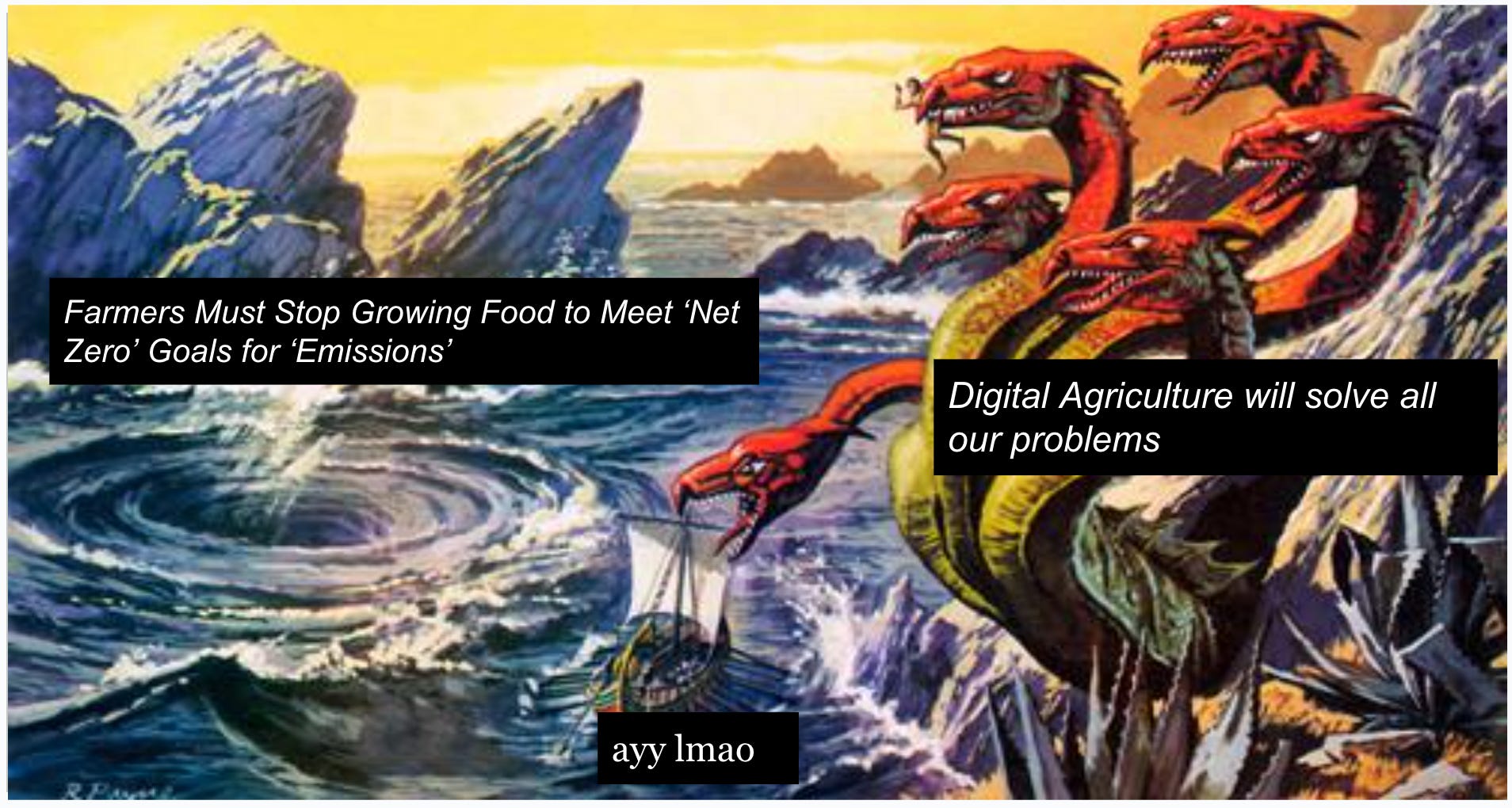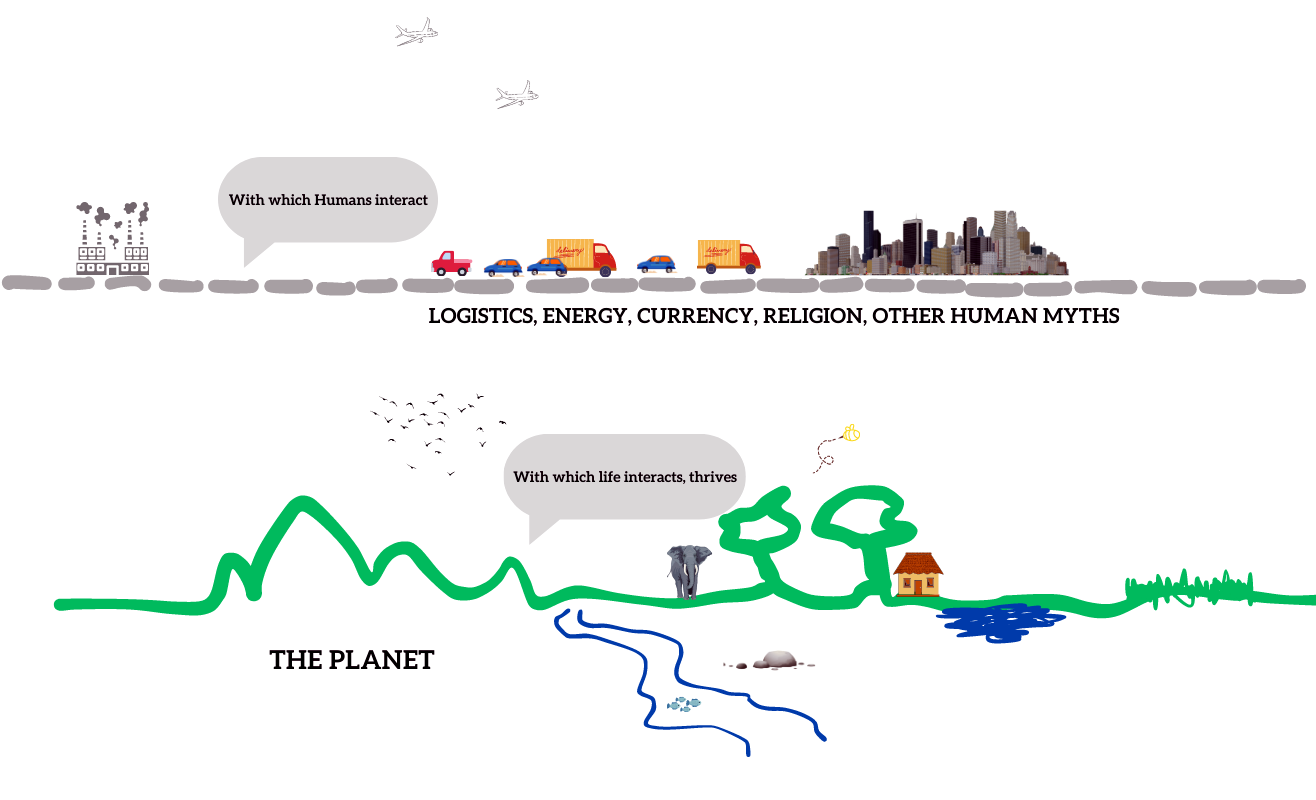Thinking in Systems
On Food and Agriculture in an age of runaway Climate Change
In the Disney sugar-fest Frozen, there is a scene that caught my attention for inexplicable reasons.
Princess Anna of Arundel is a lovelorn and very lonely young woman. She meets Prince Han of the Southern Isles (Denmark). In the inevitable duet that follows, Han sings, “We finish each other’s ________” to which Anna jumps in and croons, “Sandwiches!”.
Finishing each other’s sandwiches seems appropriate to kickstart Season 4 of Agribusiness Matters after the brief podcast interlude we had over the last few weeks (where we covered Biologicals, Managing Water, Agrifintech ($), Drones ($), and Agritech Survival) and the throat-clearing I did last week to build Generative AI Agritech Value Stack ($).
Because, you see, if you take a bird’s eye view of what we are in the middle of, we seem desperate to finish each other’s sandwiches.

But why do we do this to ourselves? In doing what we are doing, what are we really doing?
I found the best clue to this question in my wise friend Sameer’s writings. Some of you might remember Sameer with whom I had a powerful conversation many moons ago: A Study of Agriculture As If Climate Change Mattered.
In a recent post, Sameer writes,
“All species interact with the planet in a gazillion ways. Obviously.
Except that us humans, over millennia, have created layers of physical and conceptual/mythical abstractions atop the planet. Today we’re at a juncture where we interact only with these layers, by and large, and hardly with the planet.”

But why do we build these conceptual and mythical abstraction layers?
He further writes,
“Starting with food, and then onto other needs, we have tried reducing the huge complexity of the planet to a few functions and variables that we are now comfortable with, and try making predictable. This happens at the cost of most other variables and functions — our lack of knowledge, empathy or concern around them. We definitely do not consider or understand the trade-offs involved in ignoring and even destroying those inadvertently as we chase the few we care about, through the lens of our abstractions.”
Take the variable called “Maximizing Farmer’s Incomes”. It’s the most popular variable in this part of the world where I am writing this from.
What happens when you attempt to design food and agriculture systems based on this simple maximizer variable?
When you are increasing farmers’ incomes, you perhaps help them earn through market linkages which help cope with climate change extremes. As the experiences in Wet March testify to us in India, we will see increasingly dramatic derangement of weather patterns over the next few years.
If you think further, the extent to which you can maximize this variable called “increasing farmer’s incomes” depends on the local ecosystem and natural capital that define the ecological area the farmer is enmeshed in. Mind you, in today’s political climate, “doubling farmer’s incomes” variables have been designed for political boundaries, not ecological boundaries.
Any changes and stresses to these natural ecosystems affect the adaptive capacity of farmers - the ability of the farmers to adapt to the impact of changing climate. This is dual causality at play: How farmers treat ecosystems and how the ecosystem affects farmers.
If you zoom in to understand the causal relationships at play, it looks something like this. (I have adapted and paraphrased this from Desta Global’s Climate Adjacency Report, which I strongly recommend to look into these causal relationships deeper)
Emissions cause changes in local meteorology and microclimates. This causality is difficult to grapple with, as there is a time delay between cause and effect - denoted in double lines over the arrow.
Because of the dramatic derangement of weather patterns, crop pest attacks are on the rise. The ascent of invasive thrips in India’s chili ecosystem is a classic case in point.
In order to cope with these impacts, farmers end up using more pesticides on chili to control Thrips Parvispinus attacks. This local response has multi-dimensional impacts.
The way farmers react to these attacks further weakens the local ecosystems and micro-climates. These localized changes and impacts eventually show up in the global impact of climate change.
These local changes and their impact on ecosystems affect the adaptive capacity of the farmers both ways. Farmers become either maladjusted (An example from the top of my mind: Consumption of over-produced rice over traditional millets in India has affected the ability of farmers to do labor in the farms) or proactive to adapt to the change (perhaps through mechanization if they have the resources to adapt).
What determines the adaptive capacity of farmers? Collective Action. It determines the strength of their local immediate community (who exert a far bigger influence than any of us can imagine). The concept of farmer-producer organizations was designed to achieve this objective. While there have been few success stories, there is still a lot of work to be done to strengthen the organizational layer to make this work.
Market Policies and Infrastructure constrain the environment in which farmers can work to increase their incomes. The presence/ absence of local mandi infrastructure influences the price realization of farmers. Price discovery starts with the local mandi rates and ends up based on logistical arbitrage and other situational parameters.
Can we examine the layers of physical and conceptual/mythical abstractions and the surrogates we create in agriculture? Can we design agritech strategies that take into account these interconnections as a whole? What will they look like? How will mechanization strategies look like?
As much as the optimist in me wants to approach agritech strategy from this lens, in reality, I am aware of the difficulties that lie in this path.
Last week, I received anonymous feedback on my blog: “Climate Change is a fraud and the ideological narrative is doing the work for the controlling globalists. They will the nations pay your sovereignty for them.”
It’s quite tough to design agritech strategies that take these interconnections into account for a couple of reasons.
We are habituated to see a zero-sum game between Climate Change and economic growth. In a recent agritech conference, one of the keynote speakers, a popular director of a large dairy firm received a rousing clap from the audience when he was asked about sustainability: “Sustainability starts with a full stomach”. Mind you, this is a subtle way of saying, “We will take care of economic growth first, exploit the ecosystem and then care about sustainability”
An individual is part of society, market, government. We are habituated to seeing society, market, and government operate in silos and find it hard to imagine developing agritech approaches that require deep collaboration between the market, government, and society.
The optimist in me is excited to kickstart Season 4 to build further the knowledge base on bioregional agritech strategies based on the experiments and initiatives happening on the ground. We will delve into several thorny areas and attempt to unpack these mythical abstraction layers deeper.
It should be fun:)
So, what do you think?
How happy are you with today’s edition? I would love to get your candid feedback. Your feedback will be anonymous. Two questions. 1 Minute. Thanks.🙏
💗 If you like “Agribusiness Matters”, please click on Like at the bottom and share it with your friend.




Loved this 👍